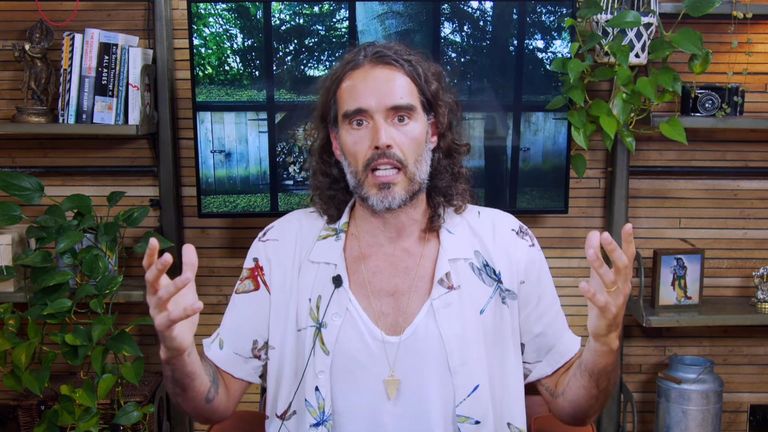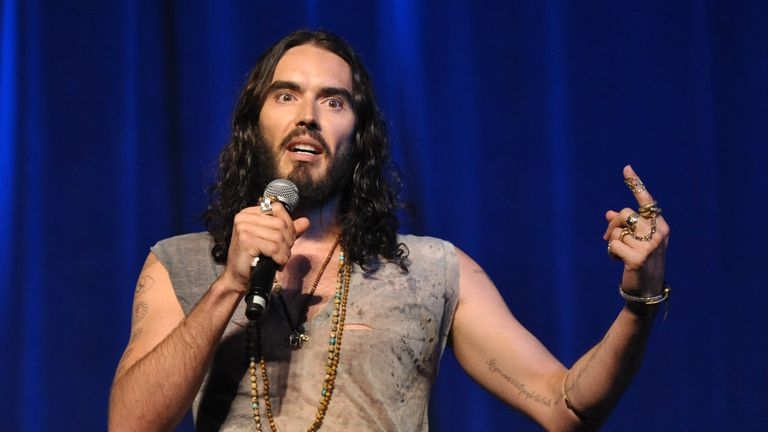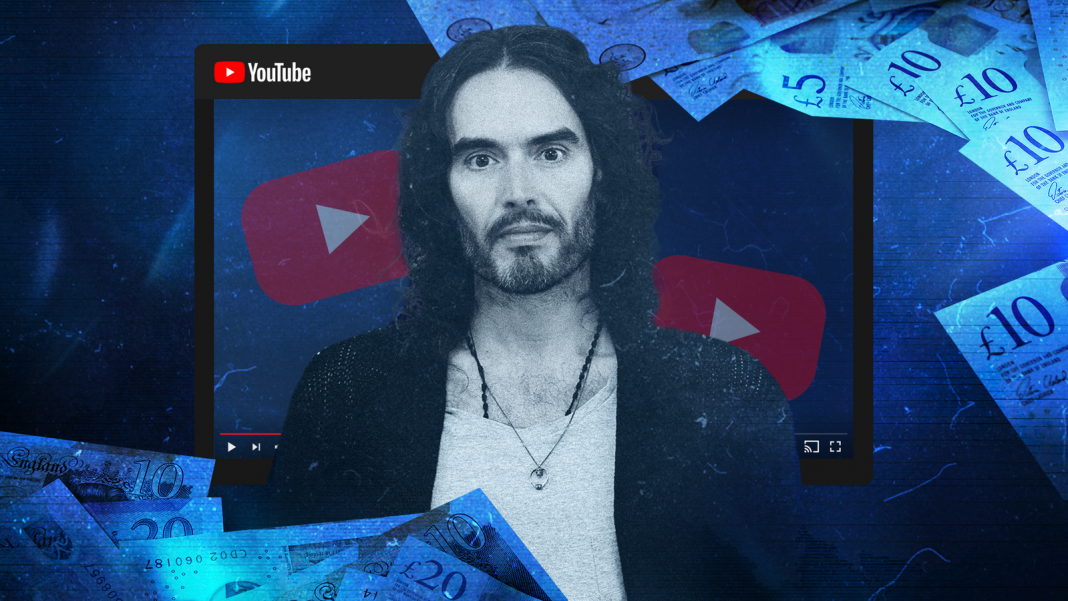YouTube is big business – not just for Google, but the creators who produce videos for it as well.
The online video platform has two billion users, boasts annual revenue of almost $30bn (£24.2bn), and its best paid stars make tens of millions of pounds each every year.
It’s proved lucrative enough for celebrities like Russell Brand to pivot away from traditional media – but after sexual abuse allegations were made against him – allegations he denies – Google suspended ads on his channel.
Sky News looks at how crucial advertising cash is to a YouTuber‘s income – and how else they make their money.
Building an audience
Adverts are the source of most of Google and YouTube’s revenue.
YouTube then shares that money with its creators, but only if they are part of its partner programme.
A creator’s channel needs at least 1,000 subscribers to be eligible for ads, and then viewers need to have spent 4,000 hours watching their videos over the past 12 months.
Alternatively, they can have amassed 10 million YouTube Shorts views in the past 90 days (this is the TikTok-style vertical video feed the platform added in 2020).
With more than six million subscribers and videos that regularly amass hundreds of thousands of views, Brand comfortably met the threshold years ago.
Please use Chrome browser for a more accessible video player

0:42
Russell Brand denies ‘serious allegations’
Meeting the criteria
YouTube’s creators who have enough subscribers and views still need to meet some other criteria.
One is to meet the platform’s community guidelines, which don’t allow things like nudity and hate speech.
The guidelines only ban “certain types” of misinformation. For example, YouTube has stopped removing videos that falsely claim the 2020 US presidential election was stolen.
Creators must also follow Google’s AdSense policies, which are designed to stop them making repetitive content or entirely reusing old clips and must not misrepresent themselves or attempt to artificially inflate their views.
And YouTube stresses the importance of advertisers wanting to associate their brands with their creators’ content, meaning any behaviour – including off-platform – which has a negative impact on the whole community will see monetisation turned off.
This would be where the Brand allegations, which he denies, come in.
A YouTube spokesperson told Sky News: “While these behaviours are rare, they can cause widespread harm to the YouTube community and potentially damage the trust among creators, users, and advertisers.”
Read more:
What are the allegations against Russell Brand?
Russell Brand: From drug addict to controversial comedian
Please use Chrome browser for a more accessible video player

0:28
Brand arrives at gig after sex assault claims
The role of adverts
If a creator meets the criteria, they can apply to the partner programme and will be reviewed by YouTube.
If accepted, they can run adverts on shorts and videos – and the longer the video, the more ads you can run.
The revenue split is 55:45 in favour of creators.
As for how much money ads can generate, it varies wildly, but creators get paid per 1,000 views on a video.
James Hacking, of social media marketing agency Socially Powerful, told Sky News: “Some creators will only get $1 per 1,000 views, others can get up to $30 or even more.”
The fees can fluctuate too – for example, a holiday vlogger might expect more ad money from a travel company in summer months, while a tech reviewer may get more from a phone case firm when a new iPhone is on the way.
Tech journalist Chris Stokel-Walker estimated that YouTube ads alone could earn Brand anywhere between $70,000 (£57,000) and $1m (£810,000) a year.
Please use Chrome browser for a more accessible video player

1:18
‘Far too much victim blaming’
How else YouTubers make money
Jordan Platten, who shares business tips with his 260,000 subscribers, makes £10,000 to £15,000 a month from approximately 500,000 views.
But he told Sky News, sponsorship – where creators get paid directly by companies and brands for endorsing their products in videos – is “where the big money is”.
He estimated Brand could be making millions of pounds from such deals.
Recent videos from Brand, which include conspiracy theories about climate change and COVID-19, have included promotions for a skincare company and VPN provider.
Mr Hacking said this appeals to creators as they can ask for what they want, rather than rely on YouTube’s rates.
“Content that drives a lot of engagement pays quite well – the more controversial the topic, the more interested the viewers are, the more it gets shared across socials,” he added.
“Brand is usually pumping out three to four videos a week and some get up to a million views, so he’s probably doing quite well.”
YouTube itself offers other monetisation opportunities, including letting viewers become members of a channel, which grants various perks for a monthly fee.
Creators can also connect an external online shop to their channel to showcase products under videos, and fans in comments and live chats can pay to have their messages appear more prominently.
And like with adverts, YouTube shares revenue it gets from its own premium membership (which removes ads) if a subscriber watches a channel’s video.







